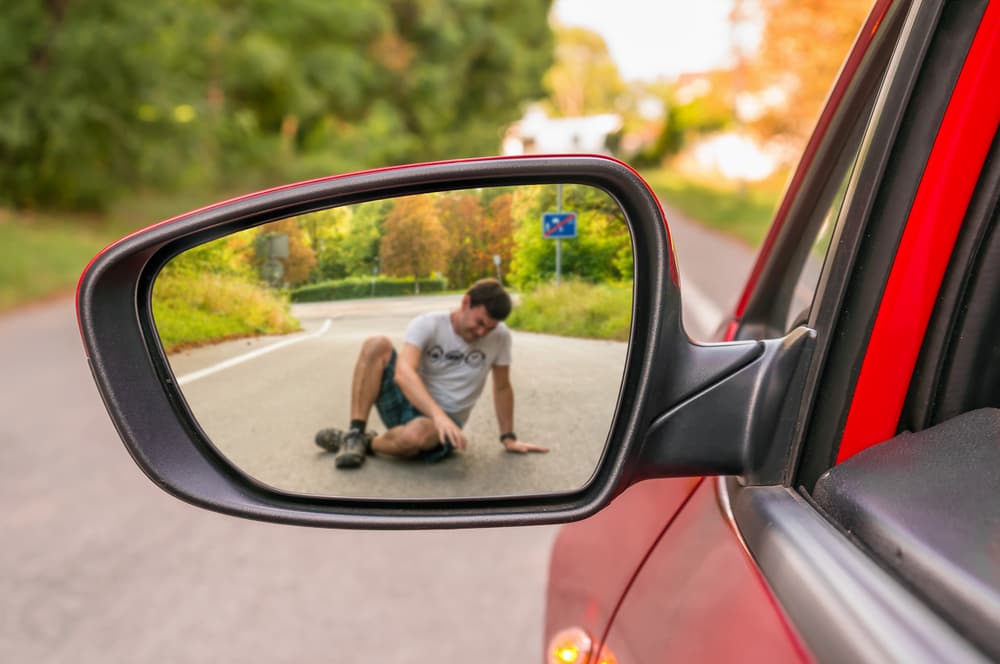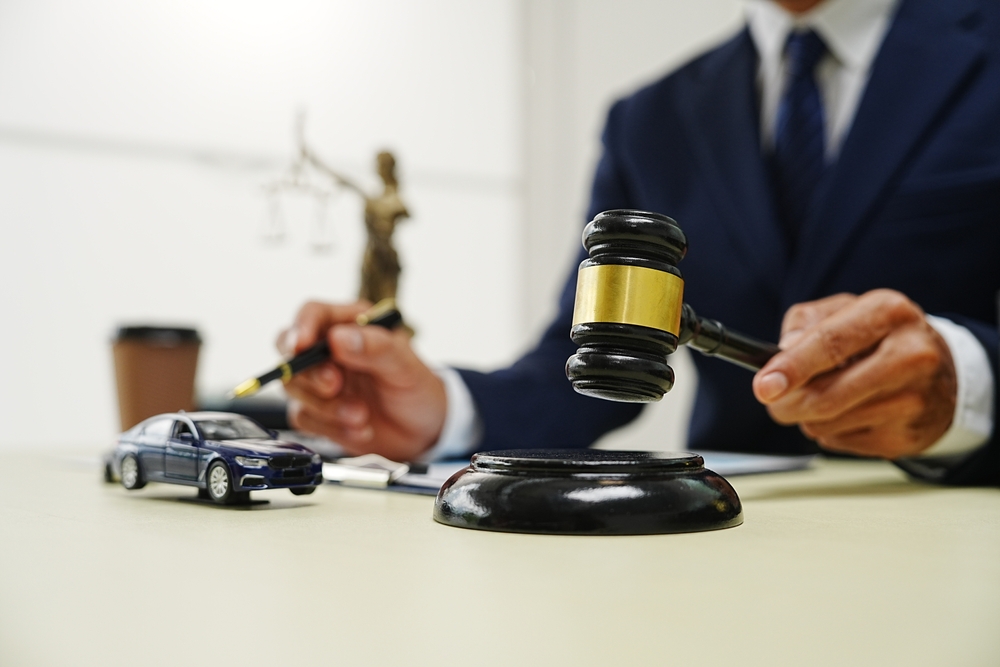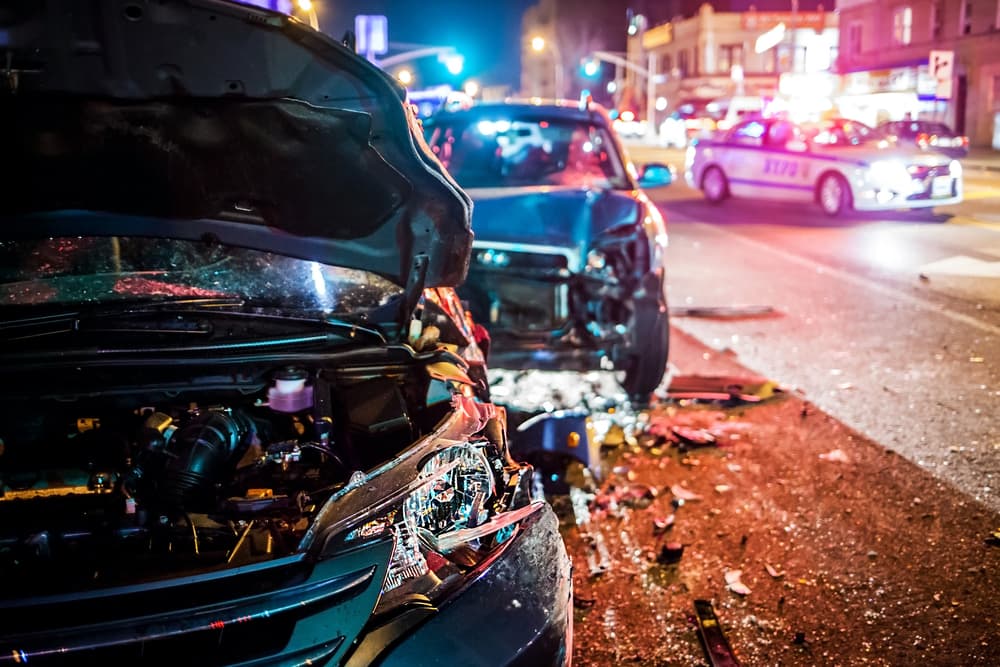Getting compensation for your medical bills, car repairs, and other expenses after a hit and run accident is often challenging. Yet, hiring a hit and run accident attorney can make recovering compensation less of a hassle.
Working with a car accident lawyer ensures you have someone who understands how to pursue compensation after this type of crash. They can handle all aspects of your claim or sue the at-fault driver if located. A lawyer can work to protect your best interests and recover the money you need and deserve.
Pursuing Hit and Run Compensation Can Get Complicated

Most states allow victims of traffic accidents to pursue compensation from the driver who caused the crash, either through an insurance claim or a personal injury lawsuit. This process becomes much more complicated when a driver causes a collision and leaves the crash scene. If this happened to you, your options for pursuing compensation are often unclear.
Working with an attorney has several benefits, and one benefit is their ability to assess your circumstances and determine your options. Many people have at least one option for seeking and recovering compensation after a hit and run. Your lawyer and their team can consider state and local laws, the information available about the at-fault party, your insurance coverage, and other factors to determine your next steps.
A Lawyer Strives to Make Your Options Clear
Your attorney could play a key role in identifying the at-fault driver in your crash. This would likely open the possibility of pursuing an insurance claim or a lawsuit against them.
Some ways hit and run victims learn the identity of the driver who hit them include:
- They have identifying information, such as a clear description of the other motorist.
- A witness got the vehicle’s tag number or other information.
- The police working the case identify the at-fault driver.
- Cameras near the scene caught the crash on video.
- Local body shops report the damage to the vehicle to the police.
- The attorney discovers the identity of the driver while gathering evidence.
Regardless of whether you know the identity of the hit and run driver, your attorney can fight for your best interests throughout the claims process. After all, navigating an insurance claim and convincing the adjuster to pay you the money you need is never easy even if you file a claim based on your own policy.
What Are My Legal Options After a Hit and Run Accident?
Your legal options after a hit and run collision depend on the circumstances and the applicable laws. When you know the identity of the at-fault driver, the case will proceed like most other crashes in your area. If not, your attorney can help you explore other options. You could:
Pursue a Fault-Based Claim or Sue the Other Driver
In general, most states operate on a fault-based system for car accidents. In these states, you would build a case against the driver who hit you.
When you know who caused your hit and run, it is often possible to secure compensation by:
- Negotiating a settlement with that driver’s auto liability insurer
- Suing that driver and taking the case to trial in civil court
File a Claim Based on Your Own Insurance Coverage
If you do not know the identity of the driver who hit you, your uninsured motorist policy would be the next option. This policy pays when a driver who does not have liability insurance causes an accident, and you suffer injuries and have damages. It also applies when an unknown driver causes the collision and leaves the scene.
Some states mandate this coverage. For example, South Carolina state law requires all drivers carry uninsured motorist coverage in addition to their auto liability policy. This policy must cover at least $25,000 in injuries per person, $50,000 in injuries per accident, and $25,000 in property damage. Most policies have a $200 deductible the policyholder pays after a hit and run crash.
According to the Insurance Information Institute (III), states that require uninsured motorist coverage include:
- Connecticut
- Illinois
- Kentucky
- Maine
- Maryland
- Minnesota
- Missouri
- Nebraska
- New Jersey
- New York
- North Carolina
- North Dakota
- Oregon
- South Carolina
- South Dakota
- Vermont
- Virginia
- West Virginia
- Wisconsin
This is optional in other states, but many require drivers to opt out of the coverage in writing when they purchase a mandated liability policy. For that reason, some drivers have this coverage and are unaware of it. Your attorney can review your policies if they handle your hit and run claim, including checking for uninsured motorist coverage.
Consider Other Sources of Seeking Damages
Occasionally, there is a situation where the at-fault driver remains unknown, but the victim does not have uninsured motorist coverage. When this occurs, seeking compensation can get complicated. Yet, you could still have options.
These could include:
- A collision insurance policy for car repairs
- Health insurance for medical treatment
- Identifying other at-fault parties or contributors to the accident and holding them accountable
How Do I Know How Much My Case Might Recover?
Knowing how much your collision cost you is at the heart of recovering fair compensation. Regardless of whether you file an uninsured motorist claim or a fault-based lawsuit, the same types of damages are available. Knowing the estimated settlement range of these damages outlines what constitutes a fair settlement offer.
To understand how much your case might be worth, you first need to know the recoverable damages in crash cases.
The damages differ somewhat from case to case but generally include:
- Medical bills, current and future
- Ongoing care and support costs for lasting injuries
- Lost income from time missed working
- Reduced earning capacity
- Property damage expenses
- Pain and suffering
- Other non-economic damages, such as emotional turmoil
Some of these damages are easy to calculate when you know what to look for. Your medical expenses are easily documented by your medical bills to date, for example. However, determining your likely future care needs and intangible losses, such as pain and suffering, are more complex.
Determining what a fair settlement offer looks like becomes easier when you have a hit and run accident attorney on your side. Your lawyer knows how to document all your damages, including those that are difficult or impossible to calculate on your own. They often call in medical experts to explain future care needs and costs, and their experience with similar cases helps them determine a fair value for non-economic damages.
An attorney can also understand how uninsured motorist coverage works and can answer your questions about your financial recovery through these claims. This involves outlining how the policy maximum might affect your case, the deductible you will pay, and other details specific to your crash claim.
What if I Learn Who Caused My Hit and Run Accident?
If you learn who caused your hit and run, it changes the way the case will proceed. You no longer have to depend on your uninsured motorist policy to recover compensation. Knowing the identity of the driver who hit you allows you to hold them accountable and get justice, as well as compensation. For many, this is an ideal outcome.
If the police identify the driver who hit you in the days or weeks after your crash, they should notify you. However, this does not always happen. Attorneys often check in to see if there has been any progress on the case.
Your lawyer should let the police know if they identify the driver, as well. Having this information listed on the crash report filed by law enforcement only bolsters your case against the at-fault driver, especially if they receive a citation for leaving the scene.
Your Attorney Aims to Protect Your Rights

Lawyers represent their clients’ best interests and protect their rights. This includes ensuring you have the opportunity to seek fair compensation based on the options available in your case. One way your attorney can protect your right to fair compensation is by managing all communications with the insurance company and others involved.
Even when you file a claim with your insurance company, there is no guarantee it’s on your side. Your attorney is, however. They are your advocate and guide throughout the claims process. The insurance adjuster is not working for you, even if you are the policyholder. Instead, they work for the insurance company. Their goal is often to pay as little as possible to close cases, protecting their company’s bottom line.
Attorneys who regularly handle cases like yours know the tactics adjusters use to reduce the recovery value of a claim. They downplay injuries, drag their feet in discussing a settlement, rush a quick agreement, or sometimes allege your injuries did not come from a crash at all. Many demand a recorded statement, which will not help your case. Instead, it helps the insurance company deny the compensation you need.
A lawyer can protect you from any attempts to dismiss, derail, or devalue your claim.
Building a Case for Compensation After a Hit and Run Crash
Even if you file an uninsured motorist claim with your insurer, you need to show that the other driver caused the crash. This requires gathering evidence and building a strong case to document what happened. Most accidents occur because of one driver’s carelessness or recklessness. The legal realm calls this “negligence.”
How Does a Lawyer Prove Negligence?
When one party acts negligently and causes injury to another, they are legally liable for the financial costs the victim pays. When that at-fault party remains unidentified, the victim’s uninsured motorist coverage should pay instead. This is why the victim still needs to show negligence occurred.
You need a lawyer who can establish four elements to confirm negligence in a car accident:
- The at-fault driver had a duty of care, usually established by a traffic law.
- They breached that duty by violating said traffic law.
- Their breach caused a collision.
- The victim suffered physical, emotional, and/or financial harm in the crash.
As an example, imagine a driver turning left across a busy intersection. They have a green light but must yield to traffic moving straight through the intersection. They failed to do so, colliding with your vehicle. They left the scene. You suffered several fractures and a neck injury.
Your attorney could prove negligence happened, and the other driver was liable by showing the driver had a green light and was, therefore, responsible for yielding to oncoming traffic. They failed to do so, and your injuries occurred in the resulting crash.
Your Lawyer Can Bolster Your Case Using Evidence
Supporting evidence in your case may comprise:
- The accident report filed by responding police officers
- Eyewitness statements
- Photos from the scene
- Videos of the crash
- An accident scene survey
- Accident reconstruction data
- Any relevant medical records
- Documentation of your damages, such as receipts and invoices
After collecting and analyzing the evidence in your case, your lawyer can organize it in a way that best tells the story of what occurred. They use this to explain to the insurance company or other parties why you deserve a payout. This is the approach used for uninsured motorist claims, auto liability claims, and lawsuits.
Consult a Hit and Run Accident Lawyer to Learn More
If you suffered injuries in a crash caused by a driver who left the scene, you could have options for pursuing compensation. Hiring a personal injury attorney experienced in hit and run accident cases can take the stress out of the claims process.
Many personal injury law firms provide free case reviews for accident victims. A team member can discuss what happened, assess your legal options, and explain how their firm helps those in similar positions. Acting quickly ensures you meet all case-related deadlines.







